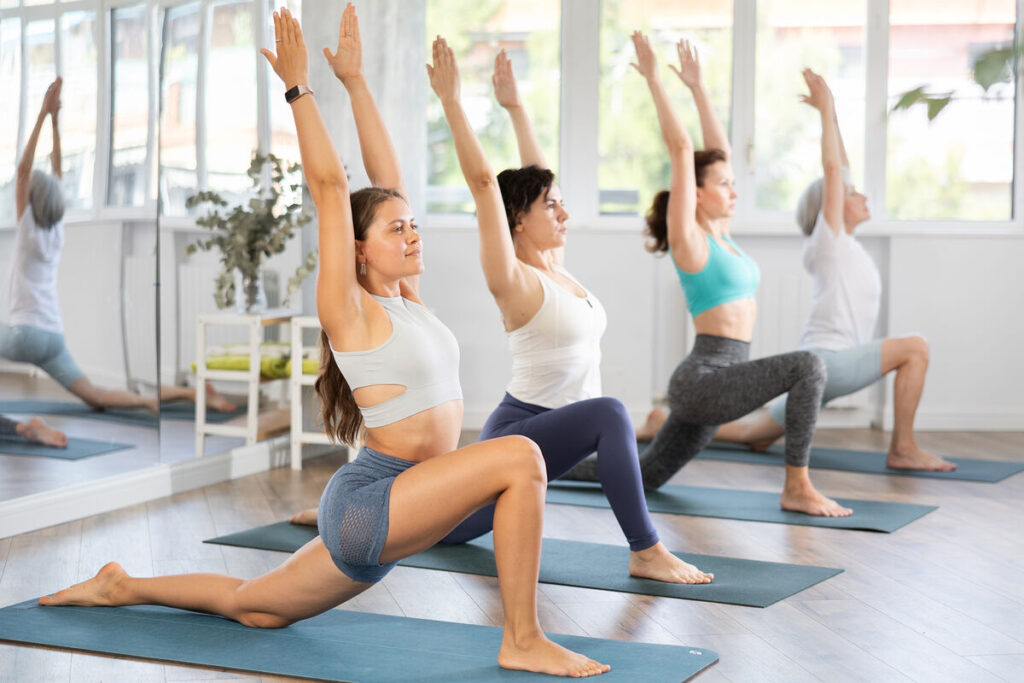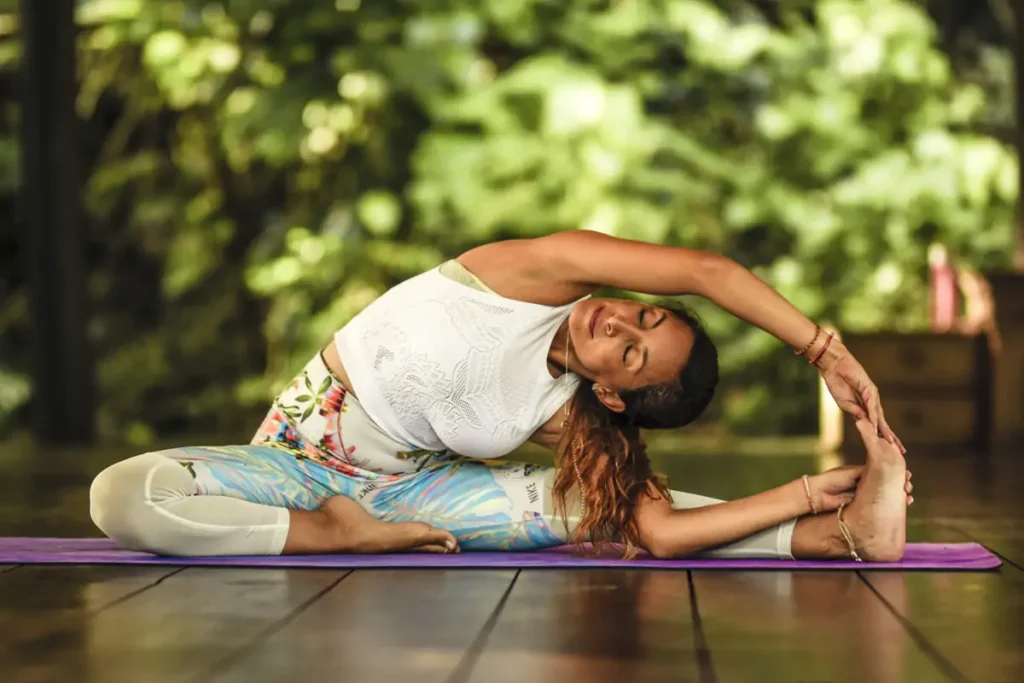
Yoga, an ancient discipline that originated in India over 5,000 years ago, has grown into one of the most popular practices worldwide. It combines physical postures, breathing exercises, and meditation to promote a balanced mind and body. While many people associate yoga with physical fitness, its benefits extend far beyond just stretching and strength building. This holistic approach aims to harmonize the mind, body, and spirit.
Different Types of Yoga
There are various types of yoga, each emphasizing different aspects of the practice. Whether you’re looking for a physically demanding workout or a peaceful, restorative experience, there is a yoga style for everyone. Below are some of the most common types of yoga:
- Hatha Yoga
Hatha yoga is a foundational practice that focuses on basic postures (asanas) and breathing techniques. It is often slower-paced and perfect for beginners. The emphasis is on alignment, strength, and flexibility. This is a great place to start for those new to yoga. - Vinyasa Yoga
Vinyasa yoga is known for its flow-like movements, linking breath to movement. The poses are typically performed in a sequence, with each movement synchronized to an inhale or exhale. Vinyasa classes tend to be faster-paced and more physically demanding, offering a dynamic workout. - Ashtanga Yoga
Ashtanga is a rigorous form of yoga that follows a set series of postures performed in a specific order. It involves a continuous flow of movements linked with deep breathing, creating a meditative and physically challenging practice. This type of yoga builds strength, flexibility, and endurance. - Iyengar Yoga
Iyengar yoga places a strong emphasis on alignment and precision in each pose. It uses props such as blocks, straps, and blankets to assist with correct posture and to make poses more accessible. This style is excellent for those who want a slower, more detailed practice that focuses on proper alignment. - Bikram Yoga
Bikram yoga is practiced in a heated room, typically around 105°F (40°C), and consists of a set sequence of 26 poses and two breathing exercises. The heat allows for deeper stretching and increased detoxification through sweating. It’s ideal for those who want to challenge their flexibility and strength. - Restorative Yoga
Restorative yoga is a calm and therapeutic practice that uses props to support the body in relaxing poses, helping to release tension and restore energy. This style of yoga focuses on relaxation, deep breathing, and stress relief, making it perfect for those seeking to unwind or recover from physical or emotional stress. - Kundalini Yoga
Kundalini yoga combines physical postures, dynamic breathing techniques, chanting, and meditation to awaken the energy at the base of the spine (referred to as “kundalini”). This practice focuses on spiritual awakening, consciousness expansion, and emotional healing. - Yin Yoga
Yin yoga is a slower-paced style that involves holding passive poses for several minutes at a time. The focus is on stretching the connective tissues, such as ligaments, joints, and fascia, rather than the muscles. This practice is particularly beneficial for increasing flexibility and promoting deep relaxation.
What to Expect in a Yoga Class
Yoga classes generally consist of several key components:
- Warm-Up: Most classes start with a warm-up to prepare the body for deeper stretches and movements. It may include gentle stretches, breathwork, and mindfulness.
- Asanas (Postures): The core of the class involves practicing various yoga poses, which can vary from standing, sitting, or lying postures.
- Breathwork (Pranayama): Conscious breathing is a crucial part of yoga. Breath control helps to relax the mind, increase oxygen flow, and energize the body. Techniques like deep belly breathing or alternate nostril breathing are commonly used.
- Meditation: Many classes end with a period of guided meditation or mindfulness to promote relaxation, mental clarity, and a sense of peace.
- Cool-Down: Just as warming up is important, cooling down is essential to relax the muscles and calm the mind after the physical exertion of the practice.
Benefits of Yoga
Yoga offers a wide range of physical, mental, and emotional benefits. Below are just a few of the many advantages that regular yoga practice can bring:
- Improves Flexibility
Yoga postures gently stretch the muscles, improving flexibility over time. This helps increase mobility, reduce stiffness, and prevent injury in other physical activities. - Builds Strength
Many yoga poses require you to support your own body weight, which helps to build strength in both major muscle groups and smaller stabilizing muscles. A strong foundation supports better posture and alignment. - Reduces Stress and Anxiety
The combination of mindful breathing, meditation, and physical movement in yoga helps to activate the parasympathetic nervous system, promoting relaxation and reducing stress. Studies show that yoga can significantly reduce symptoms of anxiety and improve mental well-being. - Enhances Mental Clarity and Focus
Yoga encourages present-moment awareness, helping to quiet the mind and improve concentration. Regular practice has been shown to enhance cognitive function and mental clarity. - Promotes Better Posture
By strengthening the core and improving alignment, yoga can promote better posture, reducing the risk of developing chronic pain or musculoskeletal issues, especially in the neck, back, and shoulders. - Boosts Circulation
The physical movements in yoga, along with controlled breathing, help improve blood circulation throughout the body. This can boost energy levels, improve heart health, and aid in the detoxification process. - Improves Sleep
Yoga can also improve the quality of sleep by calming the nervous system, reducing stress, and easing muscle tension. Practices such as Restorative Yoga or gentle evening flows are particularly effective in promoting better sleep. - Supports Emotional Health
Beyond physical benefits, yoga encourages emotional healing by fostering self-awareness, mindfulness, and self-compassion. It can help regulate mood, ease emotional tension, and support mental resilience.
Getting Started with Yoga
If you’re new to yoga, there are a few things you can do to make your practice more enjoyable and sustainable:
- Start Slow: Begin with beginner-friendly classes or videos, especially if you’re unfamiliar with yoga postures. Focus on learning the basics, including alignment and breathing.
- Find a Comfortable Space: You don’t need a fancy studio to practice yoga. Set up a peaceful, quiet spot in your home with enough space to move freely.
- Use Props: Props such as blocks, straps, and blankets can help make poses more accessible and comfortable, especially for beginners.
- Wear Comfortable Clothing: Opt for stretchy, breathable clothing that allows for free movement.
- Be Patient: Yoga is a lifelong practice. Progress may come slowly, but over time, you’ll notice improvements in flexibility, strength, and mental clarity.
